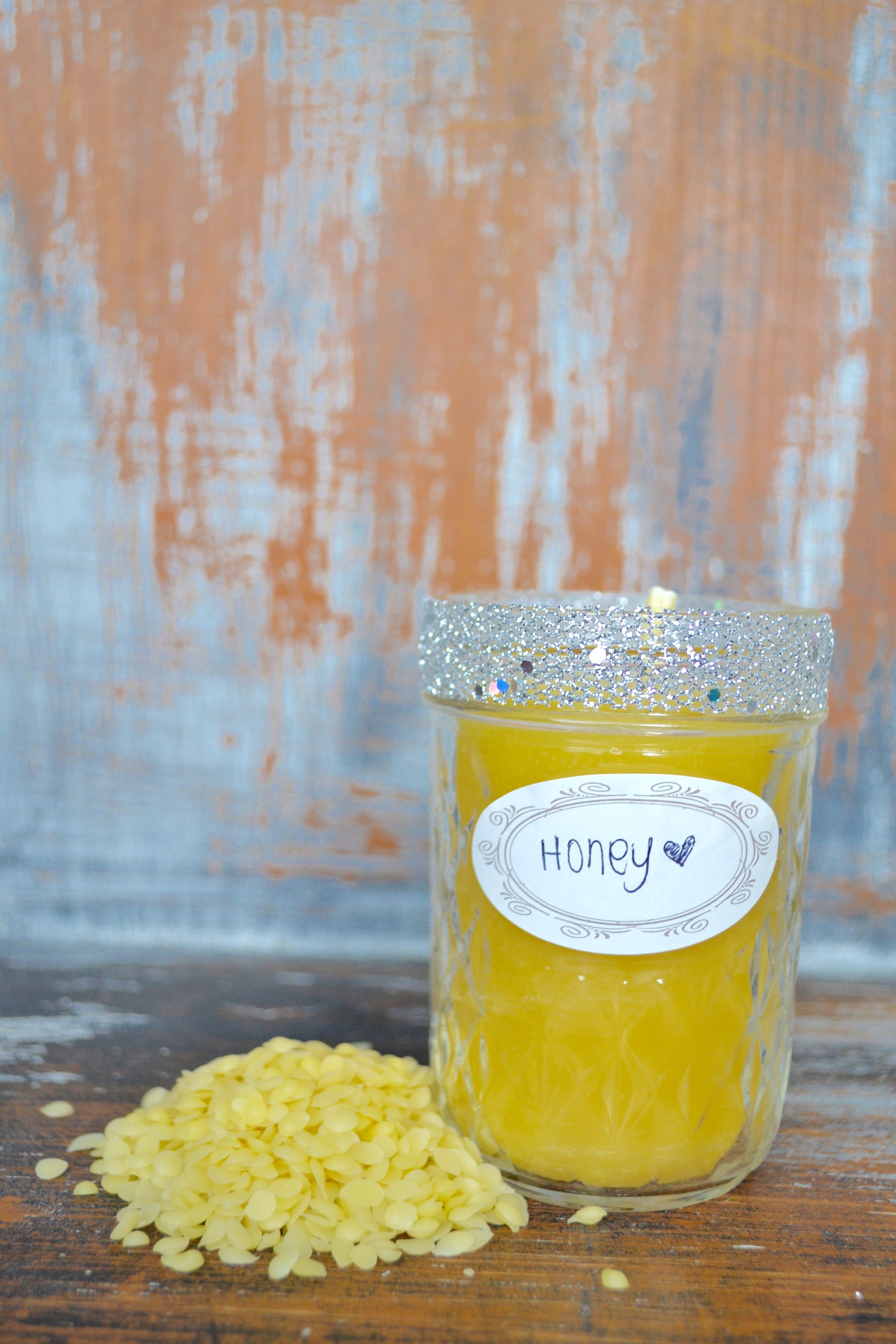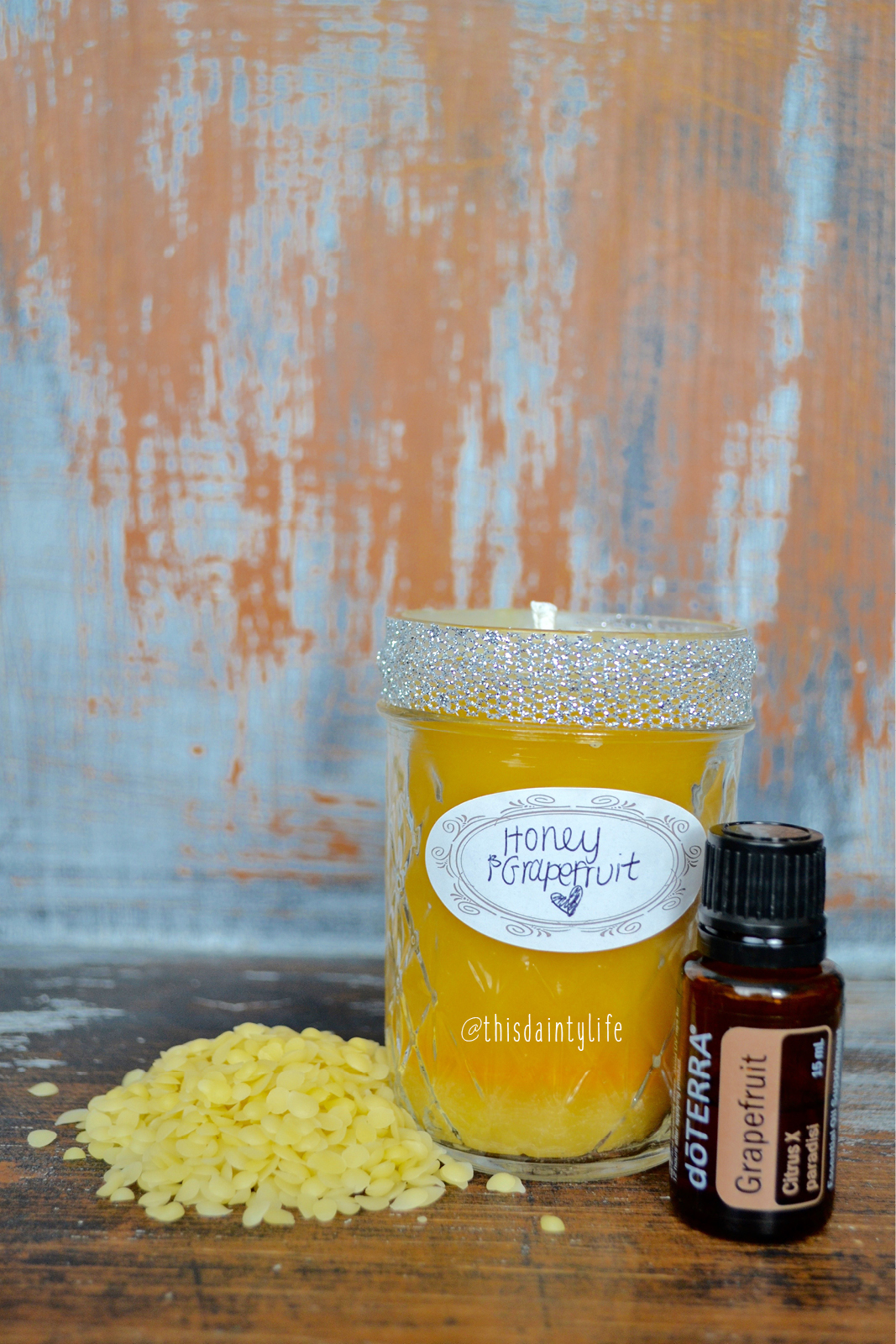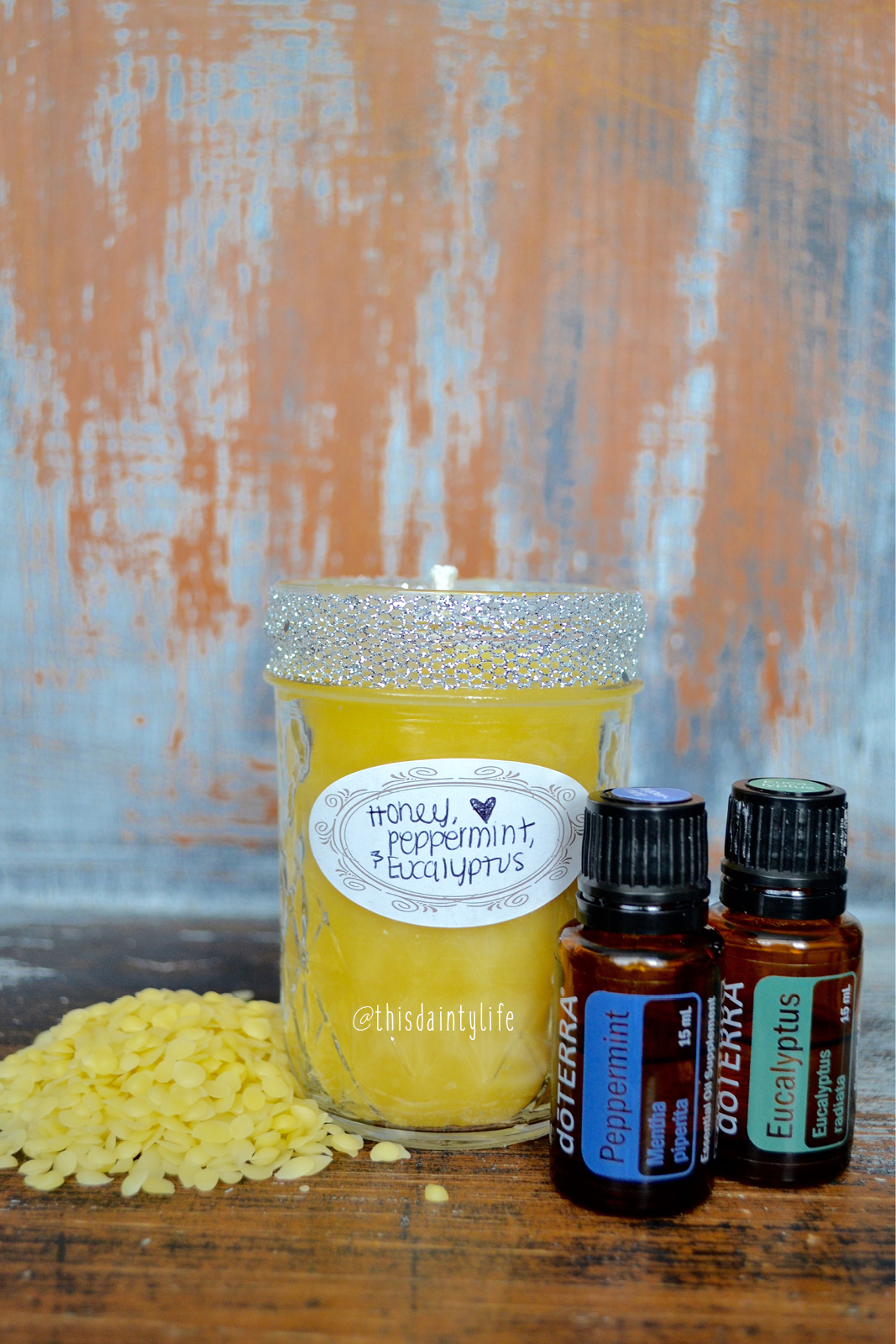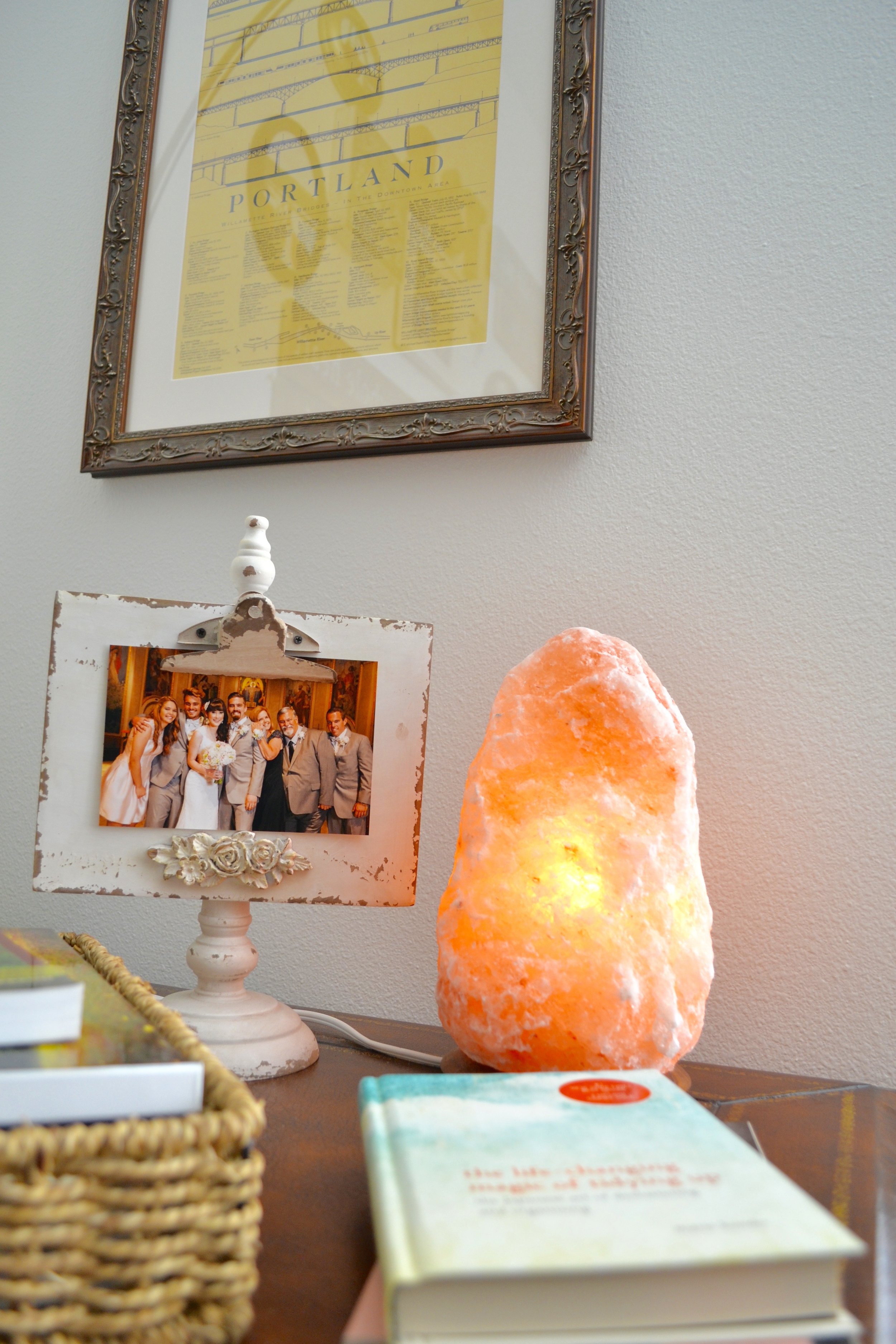Himalayan salt lamps are carved by artisans from a solid salt crystal that hasn't been exposed to air in 250 million (yes, million!) years. The amber coloring is natural, primarily made from irons, ore, copper, and magnesium. The salt lamp is carved to fit a small bulb inside, giving off a soothing, warm glow when lit. Ours came with a dimmer cord so we can choose how bright we want it to be throughout the day.
You'll get the most benefit from a salt lamp if it's left on as much as possible. We don't leave ours on when we're not home, but we do leave it on all day when we're around.
Himalayan Salt Lamp Benefits for You & Your Home
1. Improve air quality
Salt lamps are hygroscopic, absorbing moisture from the air that can carry things like allergens, bacteria, and mold. It attracts the moisture to its surface and removes these harmful contaminants from your home.
2. Promote clear breathing
When your air quality is improved, your breathing is as well. Salt lamps remove pet dander, dust, mold, bacteria, mildew, etc. from the air in your home, resulting in clearer breathing and lessening of symptoms related to allergies and asthma.
3. Enhance mood
Because of the small amount of negative ions salt lamps can generate and because of their soothing, warm glow, they have been known to boost mood and energy levels. Negative ions increase the the flow of oxygen to the brain which results in decreased drowsiness, higher alertness, and more mental energy.
4. Neutralize electromagnetic radiation
Our electronics emit electromagnetic radiation (TV, computer, cell phone, appliances, etc.). Constant, long-term exposure to electromagnetic radiation has been tied to increased stress levels (I can relate to this!), decreased immune response, and chronic fatigue. Salt lamps work to neutralize electromagnetic radiation through the negative ions they emit.
5. Improve sleep
Because positive ions reduce blood and oxygen supply to the brain, they can promote irregular sleep patterns and rob you of quality sleep. Salt lamps' negative ions can counteract this and help improve your sleep.














































